Climate-safe energy is being produced locally all over the country in ways that also produce jobs and increase racial, social, and economic justice – fulfilling the basic principles of the Green New Deal.
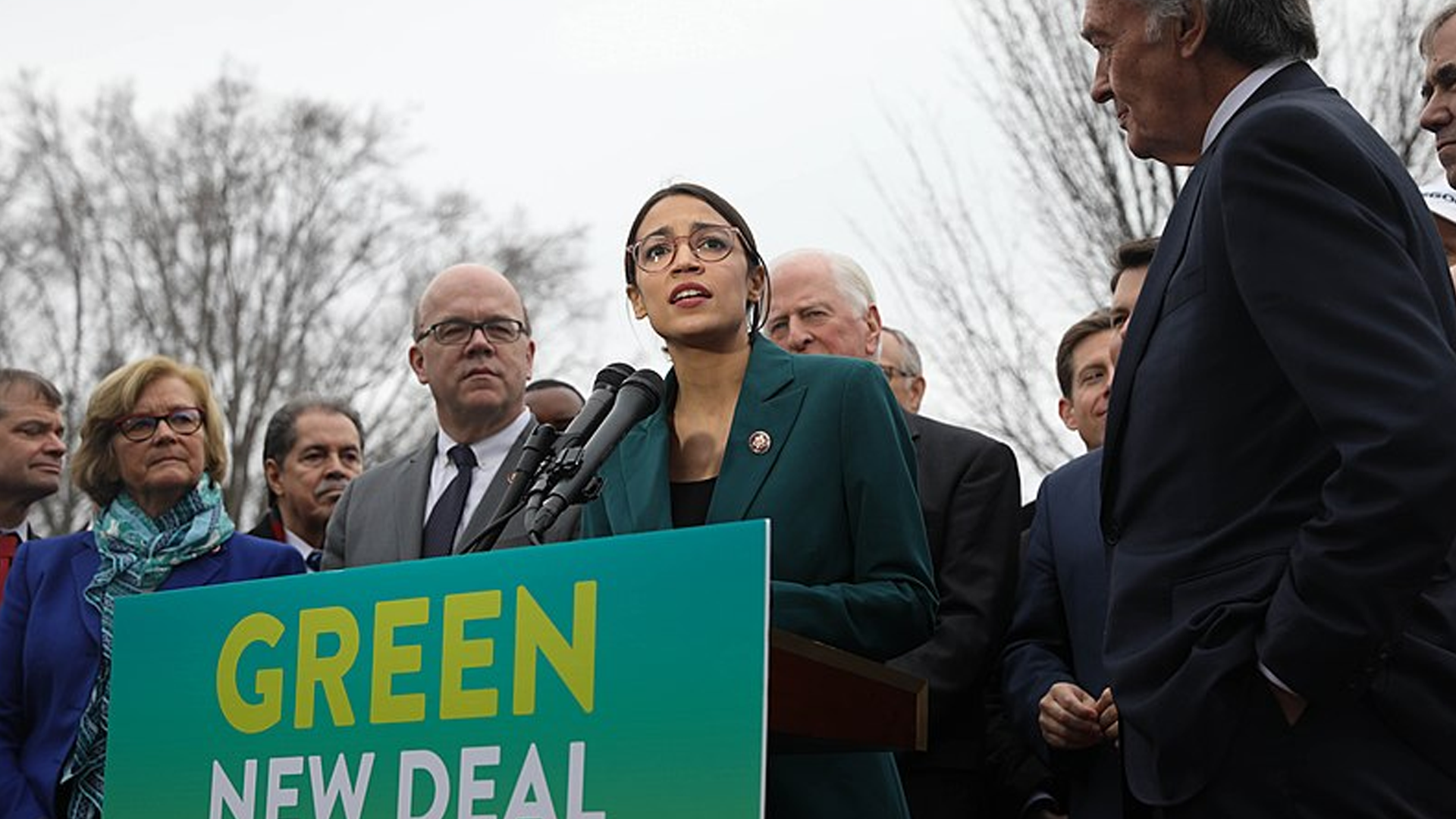
Representative Alexandria Ocasio-Cortez (center) speaks on the Green New Deal with Senator Ed Markey (right) in front of the Capitol Building in February 2019. Photo credit: Senate Democrats, Wikimedia Commons
Protecting the climate requires meeting the original Green New Deal proposal’s goal of 100% of national power generation from renewable sources within ten years.[1] That requires greatly expanding climate-safe sources of energy. It involves an unprecedented transformation of the energy system, and that requires national investment and planning. But much of the transformation will actually be composed of local building blocks – and those can begin right now. Indeed, hundreds of local initiatives around the country, ranging from community solar to municipal ownership to local microgrids, are already expanding renewable energy production.
Sunlight, Jobs, and Justice
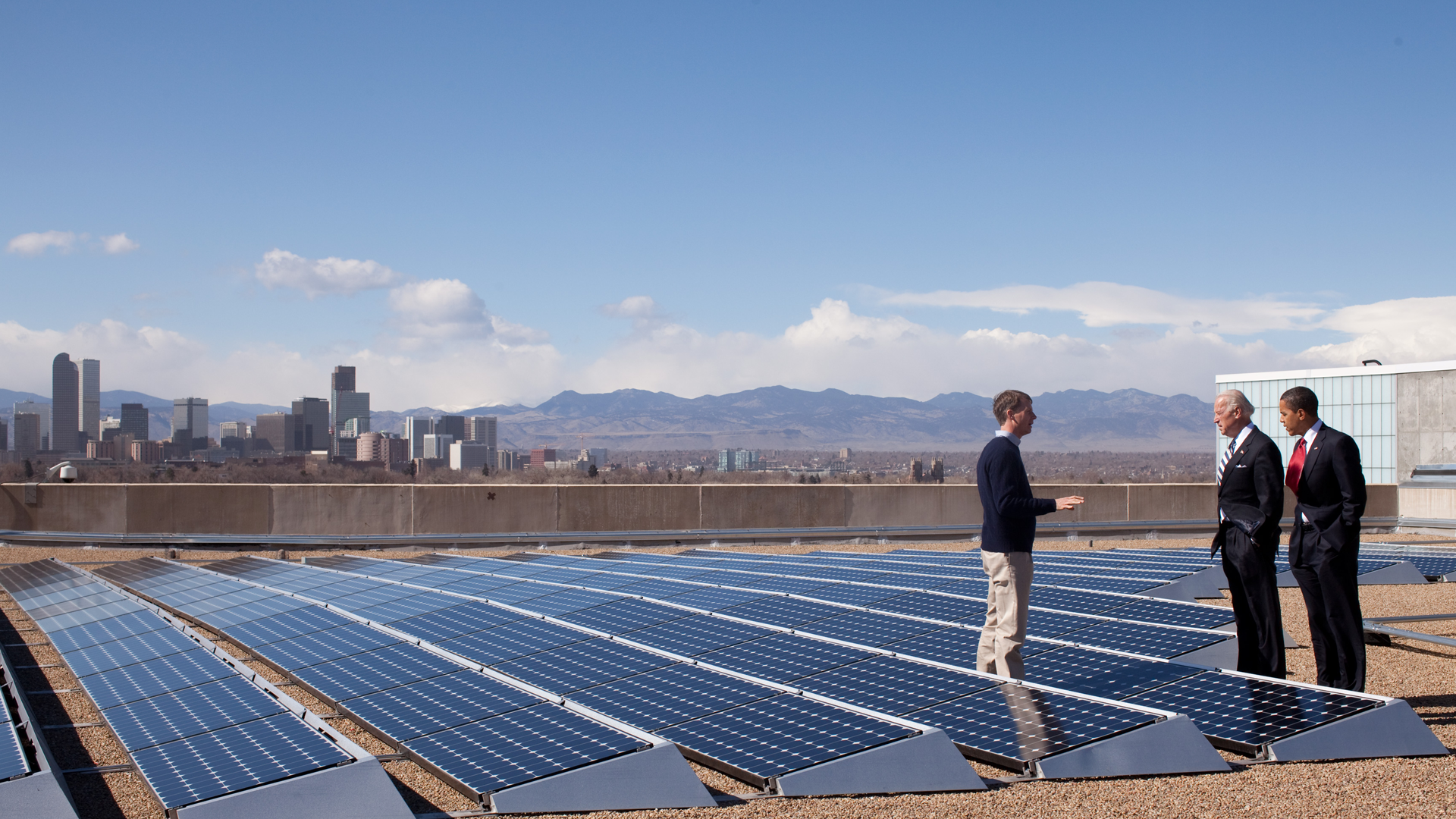
President Barack Obama with Vice President Joe Biden speaks with CEO of Namaste Solar Electric, Inc., Blake Jones, while looking at solar panels at the Denver Museum of Nature and Science in Denver, Col., Feb. 17, 2009. (Official White House Photo by Pete Souza) Photo credit: The White House from Washington, DC, Wikipedia Commons
Solar gardens are sprouting up all over Denver.
On November 3, 2020, Denver voters overwhelmingly approved Ballot Measure 2A, the Climate Protection Fund, to raise approximately $40 million per year dedicated to climate action. As stated in the ballot measure, the intent of this fund is to “fund programs to eliminate greenhouse gas emissions and air pollution and adapt to climate change. Funding should maximize investments in communities of color, under-resourced communities and communities most vulnerable to climate change.”[2]
Community solar gardens use photovoltaic (PV) panels to produce electricity from sunlight for an entire neighborhood. Now such solar gardens are dotting sites owned and financed by the City of Denver, including rooftops, parking lots, and vacant lands. The power generated from the solar gardens will be shared between city facilities, income-qualified residents, and publicly accessible electric vehicle charging stations.
In accord with the principles of the Green New Deal, Denver’s solar garden program has a strong justice dimension. Since Denver owns the project, it can set its own standards. Ten percent of the energy generated by the solar gardens is allocated to low-income housing through the Denver Housing Authority. An additional 10 percent will be allocated to low-income households through Energy Outreach Colorado, and will be exempt from subscription fees. A paid workforce training program available to Denver residents will provide 10 percent of the city and county’s solar workforce.
The solar gardens are designed to contribute to the goal of Denver’s “80 x 50 Climate Action Plan” to transition Denver to 100 percent renewable electricity for municipal buildings by 2025; achieve 100 percent community-wide renewable electricity by 2030; and reduce Denver’s greenhouse gas emissions 80 percent, as compared to a 2005 baseline, by 2050.[3]
Meanwhile, the Denver Housing Authority and affordable housing developers have launched the CARE Project (Clean Affordable Renewable Energy), included a two-megawatt community solar garden which serves 500 homes throughout the City & County of Denver. Project goals include offering predictable reduced energy costs and renewable energy options to low-income communities and developing a pipeline to employment in the solar industry for under-served communities. Community residents have already had hands-on training and gotten jobs with solar developers in the program. Both the DHA and its residents have saved money on their electric bills – some close to 20% per month.[4]
While individual solar gardens are often at small scale, cumulatively they can add up to substantial amounts of electricity. Minnesota’s community solar program, started in 2014, now deploys 800 megawatts of operational capacity with more than 12,000 residential customers, as well as commercial and public service entities, including schools, colleges, hospitals, and county and local governments.[5]
California, aiming for 100% renewable electricity, is using another approach to solar energy – the “solar mandate.” Since 2014, all new California residential and commercial buildings have been required to have a “solar ready roof.” Since 2017, every residence or commercial building below 10 stories has been required to have PV solar panels or solar water heaters.[6] The solar mandate legislation articulated the threat of climate change:
As a coastal city located on the tip of a peninsula, San Francisco is vulnerable to sea level rise, and human activities releasing greenhouse gases into the atmosphere cause increases in worldwide average temperature, which contribute to melting of glaciers and thermal expansion of ocean water — resulting in rising sea levels.
San Francisco is already experiencing the repercussions of excessive CO2 emissions as rising sea levels threaten the City’s shoreline and infrastructure, have caused significant erosion, increased impacts to infrastructure during extreme tides, and have caused the City to expend funds to modify the sewer system.[7]
In 2018, California went further, passing Assembly Bill 178, a unique-to-California mandate that requires solar panels on all new residential buildings of three stories or less.[8]
Over the past decade, local solar energy has grown exponentially city by city. The amount of solar power installed in 2020 in just seven U.S. cities exceeds the amount installed in the entire United States at the end of 2010. Of 57 cities surveyed in one study, almost 90 percent more than doubled their total installed solar PV capacity between 2013 and 2019.[9] With solar energy costs continuing to fall, the opportunities for job-and-justice-promoting solarization most likely will continue to rise.
You don’t need a weatherman…
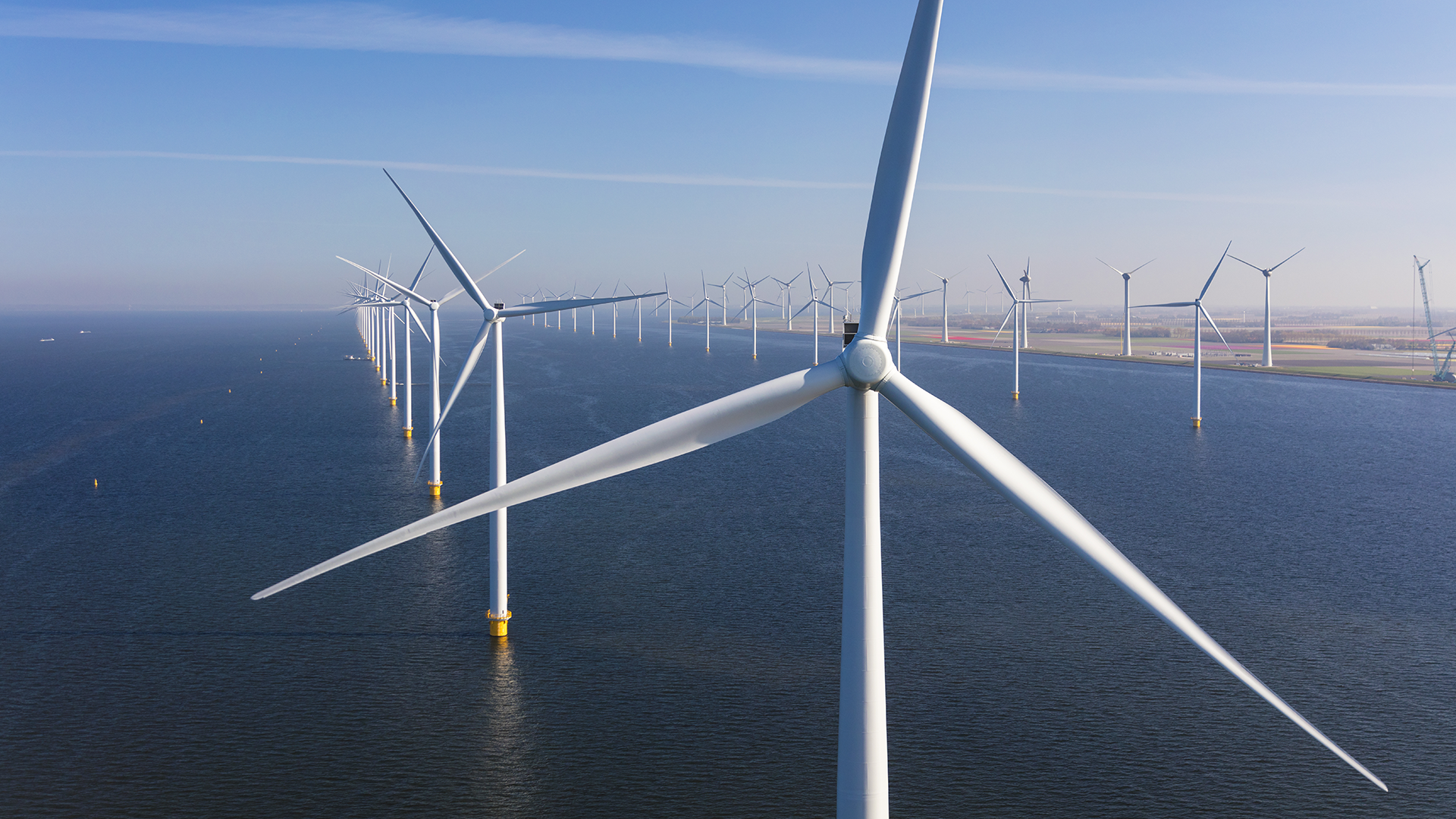 Vineyard Power is a community-owned cooperative with a membership base of nearly 1,400 households and businesses in Martha’s Vineyard, MA. Its mission is to produce electricity from local, renewable resources while advocating for and keeping the benefits within the island community. Its vision is to make the island of Martha’s Vineyard 100% renewable in domestic electricity, transportation and home heating by 2040.[10]
Vineyard Power is a community-owned cooperative with a membership base of nearly 1,400 households and businesses in Martha’s Vineyard, MA. Its mission is to produce electricity from local, renewable resources while advocating for and keeping the benefits within the island community. Its vision is to make the island of Martha’s Vineyard 100% renewable in domestic electricity, transportation and home heating by 2040.[10]
In 2015, Vineyard Power Coop formally partnered with Vineyard Wind, an offshore wind development company, through the first Community Benefits Agreement (CBA) for offshore wind signed in the United States. This partnership is designed to ensure that the benefits of offshore wind remain within the local island community.
Soon thereafter, Vineyard Wind won the rights to develop renewable energy projects in a federal lease area on the outer continental shelf off the southern coast of Massachusetts. Its first project, Vineyard Wind 1, will provide clean, sustainable energy to over 400,000 homes and businesses in Massachusetts at a competitive price as part of the state’s effort to achieve net-zero carbon emissions by 2050. Vineyard Wind 1 is scheduled for completion in 2023.
Vineyard Power is working with Vineyard Wind and local, state, and federal agencies to maximize local community benefits, participation, and engagement. The Community Benefits Agreement provides for local jobs, control, and stable electricity prices. Vineyard Wind 1 will generate thousands of jobs through the development, maintenance, and operation phases over the next 25-30 years, not only in the project itself but in an operations and maintenance facility and in the local airport.[11] The project includes local job training: Vineyard Power in partnership with Adult and Community Education Martha’s Vineyard and Bristol Community College are providing islanders the education and training to become offshore wind technicians and project managers.[12]
Offshore wind projects are developing all along the east coast, with substantial numbers of good-quality jobs in the offing. In 2020, Virginia passed a law that set a target of developing 5,200 megawatts of offshore wind power by 2034. In Portsmouth, VA, the Spanish wind turbine manufacturer Siemens Gamesa plans for 310 jobs to make preparations for a new offshore wind farm. 260 of them would be in a finishing plant where blades are painted and assembled. In New Jersey, Ørsted of Denmark and EEW of Germany plan to open a factory to build the steel foundations of turbines—called monopiles—that would provide up to 500 jobs. In New York, Marmen of Canada, Welcon of Denmark and Smulders of Belgium are planning a plant to make steel towers for offshore wind turbines; it will employ up to 350 people.[13]
While offshore wind is new in the US, onshore wind is a well-established and fast-growing industry. Back in 2012, the City of Milwaukee and the Port of Milwaukee installed a 100 KW wind turbine at the Port’s administrative building near the shore of lake Michigan. It provides more than 100% of the energy needed for the building and has saved over $100,00 in energy costs. According to the city of Milwaukee, “Since many of the components and all of the installation services were sourced from Wisconsin firms, the wind turbine also demonstrates that every dollar we invest in renewable energy in Wisconsin, is a dollar invested in a job for a Wisconsinite.”[14]
In 2020, 42 states had utility-scale wind power projects, which together generated a total of about 338 billion kilowatt hours (kWh).[15] Texas now has more wind capacity than any other US state. If Texas were a country, it would have had the fifth-highest installed wind capacity in the world.[16] In 2010, wind accounted for 6% of the electricity generated in Texas; in 2019, wind power accounted for 18%. On the morning of May 2, 2020, wind generation supplied 59% of hourly electricity demand in the state of Texas.[17]
Public power
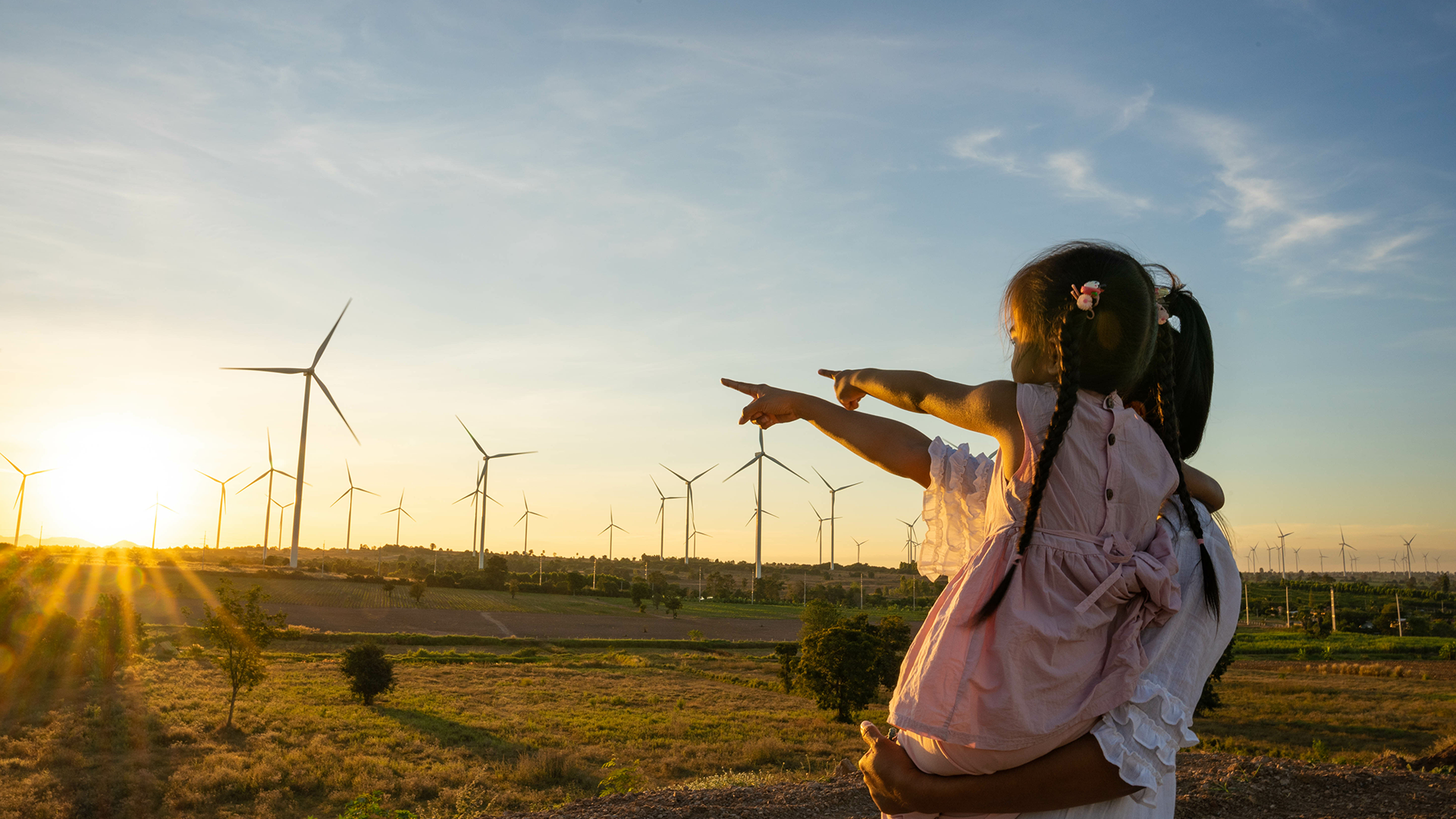
Public power utilities are community-owned, not-for-profit electricity suppliers that provide reliable, low-cost electricity to more than 49 million people. Homes and businesses in 2,000 communities across the U.S. — large cities like Austin, Nashville, Los Angeles, and Seattle, as well as small towns and the Navajo nation — get electricity from a public power utility. Collectively, these utilities serve 1 in 7 electricity customers across the U.S. and operate in 49 states. Like public schools and libraries, public power utilities are owned by the community and run as a division of local government. These utilities are governed by a local city council or an elected or appointed board. Community citizens have a direct voice in utility decisions, including the rates charged and the sources of electricity.[18]
In 2019, about 40% of power generated by public power came from non-carbon emitting sources.[19] And many public power utilities are now going greener.
Since the days when Bernie Sanders was its mayor, Burlington VT has been a precursor of the Green New Deal. Burlington is one of the cities that owns its own electric utility, run by the Burlington Electric Department. In 2014, the Department purchased the Winooski One hydroelectric plant, making Burlington the first city in the nation to source 100% of its electricity from renewable generation.
The city’s recent Net Zero Energy Roadmap aims to realize net zero energy by 2030. That includes making all buildings more efficient and electric; electrification of space and water heating; a district heating system for high-load buildings; and incentives for low- and moderate-income customers. It also includes land use policies to reduce energy use; powering all municipal vehicles with 100% renewable electricity; a 15% reduction in vehicle miles travelled; and 20 new vehicle charging stations at public locations and multi-family buildings.[20] The city’s control of its own electricity makes these goals far easier to achieve.
Community Choice
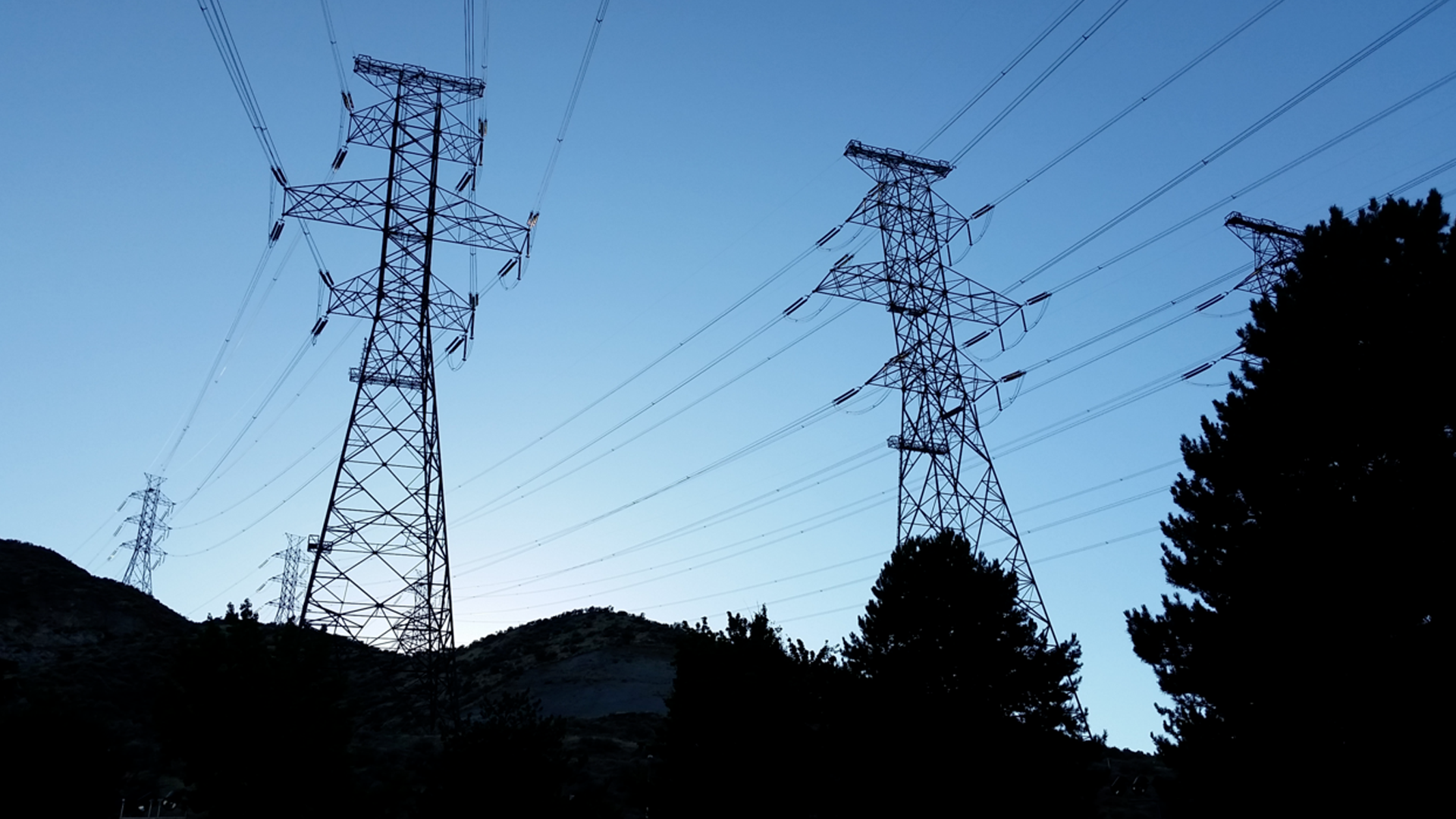
Electric power line at Grand Coulee Dam, Washington. Photo credit: Varistor60, Wikimedia Commons
Another strategy being applied locally to achieve GND-style energy production objectives is called Community Choice Aggregation (CCA). CCA allows local governments to procure power on behalf of their residents, businesses, and the municipalities themselves. It can provide communities more local control over their electricity sources, more green power than is offered by the default utility, and lower electricity prices.
Here’s how it works: By buying electricity collectively through their municipality, consumers gain leverage to negotiate better rates with competitive suppliers and choose greener power sources. Most CCAs have opt-out provisions, meaning when a community begins a program, customers are given advanced notice and have the choice to opt-out of the CCA program and continue to receive electricity from their current supplier. Customers who do not opt-out are automatically enrolled in the program. CCAs are currently authorized in California, Illinois, Ohio, Massachusetts, New Jersey, New York, and Rhode Island. In 2016, CCAs sold about 8.7 billion kilowatt-hours of green power to about 3.3 million customers.[21]
An example: The Town of Swampscott, MA, launched its aggregation program, Swampscott Community Power, in 2016. The aggregation plan was developed to provide residents and businesses with a green and predictable electric supply rate. This program is having a measurable and significant impact on Swampscott’s carbon footprint. Based on data from the first year of the program, Swampscott was able to reduce its carbon footprint by more than 9,700 tons of carbon dioxide. That’s equivalent to removing more than 2,000 passenger vehicles from the road for one year.[22]
Green Power Communities

Local governments can use their purchasing power to promote fossil-free electricity. The EPA Green Power program classifies as “Green Power Communities” those that use “renewable energy resources and technologies that provide the highest environmental benefit.” That includes
solar, wind, geothermal, biogas, eligible biomass, and low-impact small hydroelectric sources. Customers often buy green power for its zero emissions profile and carbon footprint reduction benefits.[23] In 2021, the combined annual green power use of EPA’s Top 30 Local Governments amounts to nearly 5 billion kilowatt-hours of green power, which is equivalent to the annual electricity use of more than 464,000 average American homes.[24]
Dallas TX is the most populous city in the U.S. purchasing 100% green power. In 2019, the United States Conference of Mayors presented the City with the 2019 Mayor’s Climate Protection Award.[25]
Local grids
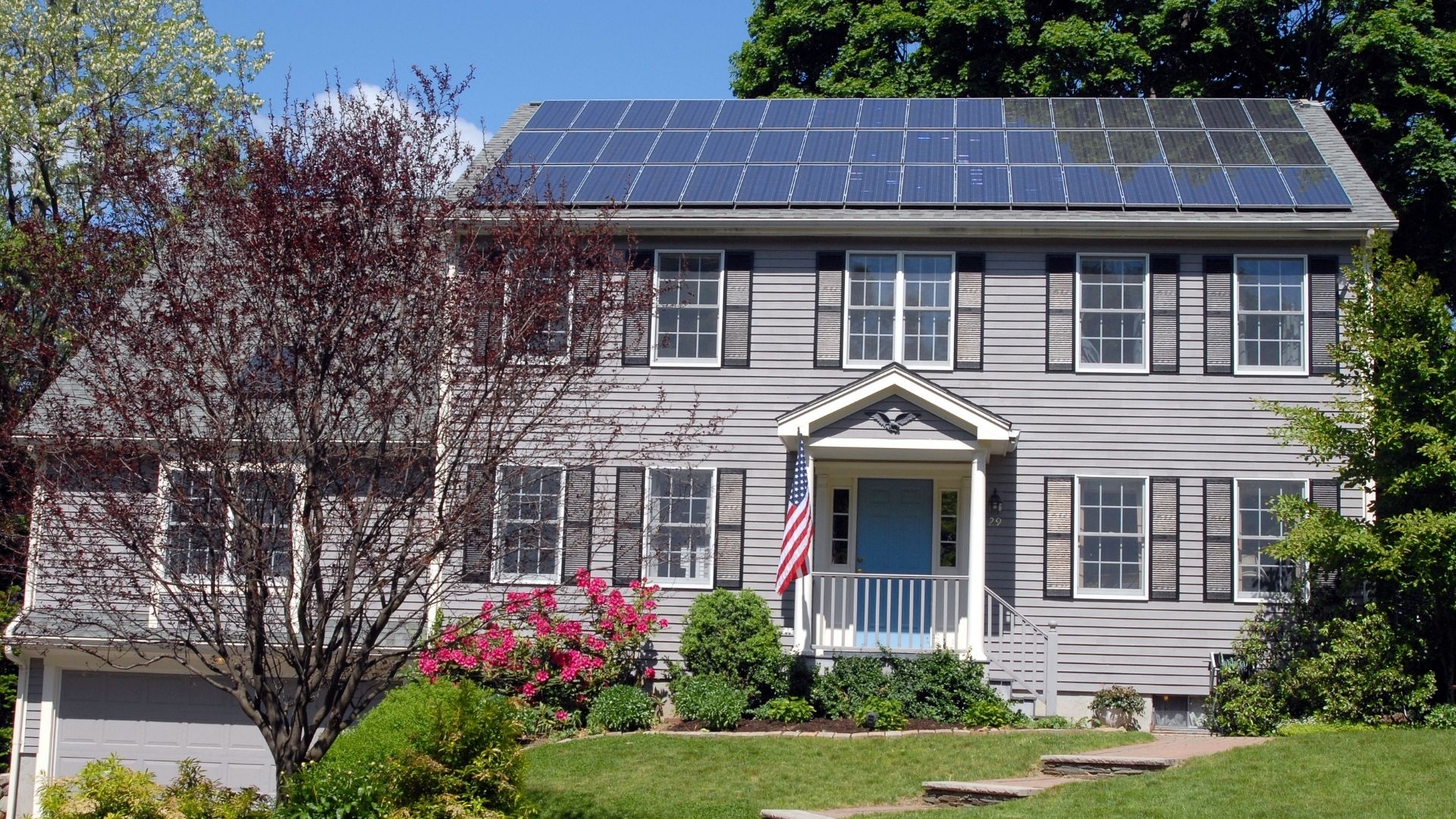
Photovoltaic solar cell panels on the roof of a house near Boston Massachusetts. Photo credit: Gray Wattson, Wikimedia Commons
Electrical energy requires not only production but also distribution. That can include local, regional, and national power grids. While improvement of the national grid will require planning and investment by the federal government, local “microgrids” are developing all over the country.
Pam Tau Lee, founder of the Asian Pacific Environmental Network (APEN), recently described the plans for one local microgrid. Boston’s Chinatown, she said, is “vulnerable to extreme heat and flooding with the highest level of particulate air pollution in the state.” The Chinese Progressive Association is planning for a “community-owned energy microgrid to reduce emissions and bring electric power to those most impacted by environmental injustice.” She emphasized the importance of a collective voice to ensure climate issues in these communities “are uplifted and addressed” and that “Green New Deal infrastructure projects provide good paying union opportunities for community residents.”[26]
According to a summary of the project, it will
improve energy resiliency in Boston’s Chinatown neighborhood, which is projected to experience regular flooding, assuring reliable transportation and mobile communications, as well as delivery of essential services like food, water, and energy. The proposal includes eight affordable housing complexes. The project team is strongly committed to modeling a grassroots-driven microgrid project which seeks to address energy justice challenges by engaging politically and economically marginalized communities who are disproportionately affected by high energy costs and the impacts of climate change.
At least 14 such microgrid projects have received funding in Massachusetts alone.[27]
Green Power to the People
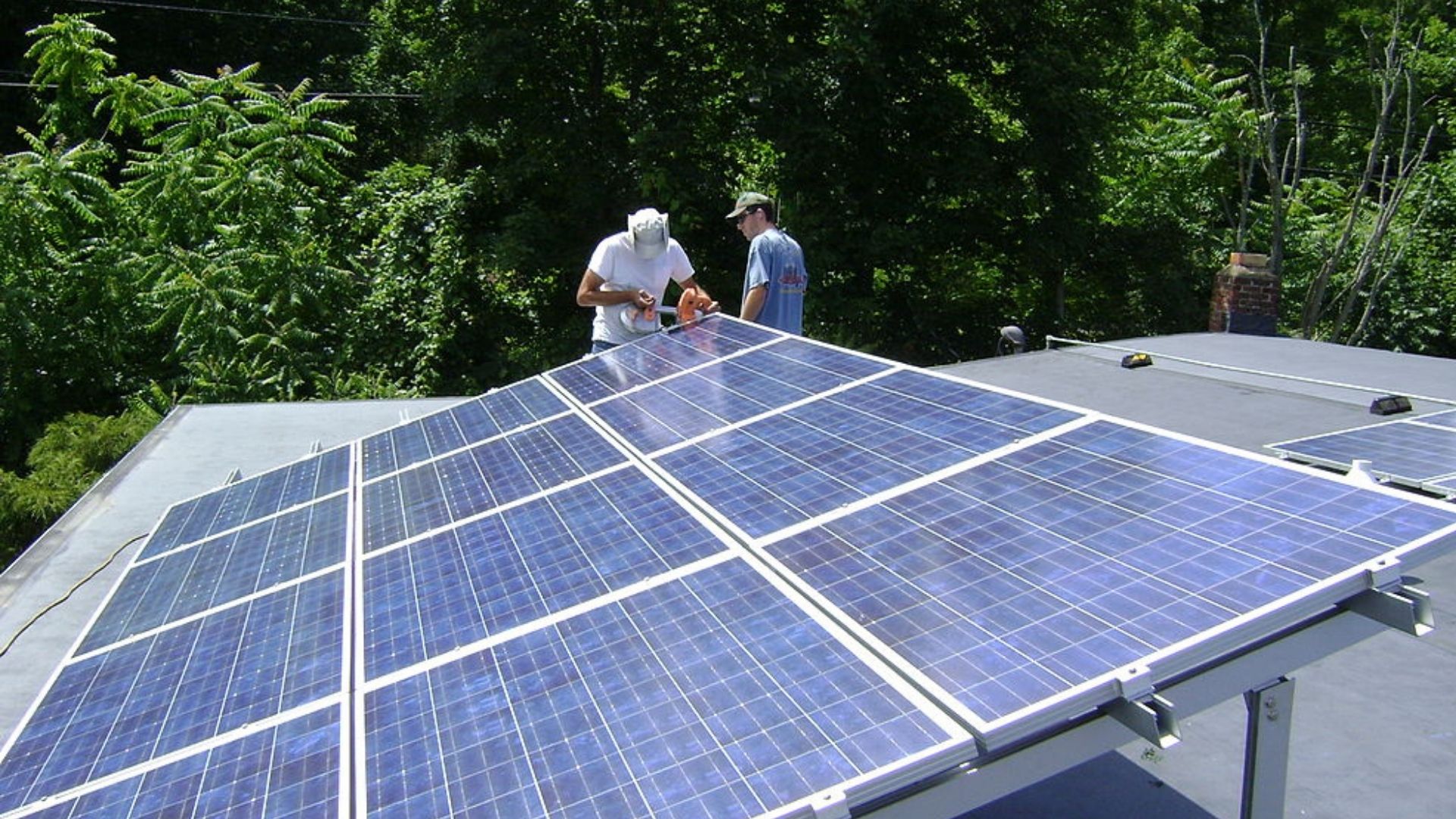
Two workers installing a tilt-up photovoltaic array on a roof near Poughkeepsie, NY. Photo credit: Lucas Braun, Wikimedia Commons
Protecting the climate requires a rapid transition to 100% renewable energy. The original Green New Deal proposal called for 100% of national power generation from renewable sources within ten years.[28] That requires expanding climate-safe sources of energy. As we will see in the next two commentaries, climate protection also requires reducing the overall amount of energy needed and a rapidly reduction in the use of fossil fuels.
All energy production starts local: solar collectors, windmills, and geothermal installations are located in particular places. In addition, energy policy and regulation in the US is set less at the national than the local and especially the state level. What federal policy there is has long been driven by the power of the fossil fuel industry and its desire to maximize profits and expand the markets for its products. This impedes a rationally planned transition to climate safe energy. But – as we have seen above – it also opens enormous opportunities for green energy and GNDfB programs.
According to a recent study, wind and solar power can meet 85% of US electricity needs – and even more if battery storage is added to the equation.[29] The U.S. now has enough clean energy capacity to power over 50 million homes. Wind power was the #1 choice for utility-scale power generation in 2020, capturing 50 percent of new additions, while solar was #2 with 26 percent of the market. Wind, solar, and battery storage power combined represent 78 percent of new power growth for the year. In total, they supplied nearly 11 percent of the country’s electricity in 2020.[30]
GNDfB energy production projects are often specifically designed to provide jobs, access, and training to local communities. Renewable energy production normally produces far more jobs than it replaces.[31] According to the 2021 “Clean Energy Workforce Report,” there are currently more than 425,000 workers in all 50 states in the wind, solar, and energy storage workforce. Wind technician is the country’s fastest growing occupation; solar installer is the third. Clean energy workers make 30% more than the national median wage; their unionization rate is significantly above the national average for the private sector. “Build Back Better” policies designed to reach 50-70% clean energy generation by 2030 would create an additional 500,000-600,000 jobs.[32]
While not all renewable energy promotes racial, environmental, and economic justice, a large proportion of such projects include specific social justice objectives and strategies. They replace fossil fuel causes of environmental injustice like coal smoke and drinking water pollution with clean, healthy solar, wind, and other pollution-free energy. Many are specifically designed to provide jobs, access, and training to low-income and discriminated against groups and communities.
There are many varieties of GNDfB energy production and many possible options for those who wish to pursue it. The principal energy sources are solar and wind, but there are also others like hydropower, geothermal, ocean waves, and biological sources that are currently less used by GNDfB projects but might play a role in the future. Scale of projects vary from individual rooftops to communities and cities to large utility-scale wind and solar installations. The distribution and utilization of energy produced may be limited to the location where it is produced or make use of a local, regional, or national grid. Production for grids may be centralized in large units or the combined contribution of many small, linked production units. Investment and control may be corporate, non-profit, governmental, or cooperative or a partnership of different players.
The design and scale of local energy projects at times arouses local opposition. The Copake, NY town board, for example, recently passed a resolution opposing a proposed 255-acre utility-scale solar farm. The Town Supervisor says, “The town opposes the project as it is currently proposed” because it is “too big” and “poorly sited.”[33]
Nonetheless, powerful forces are pushing GNDfB power production, including climate protection, environmental justice, economic efficiency, and political advantage. The political process by which these GNDfB projects came into being varies enormously. Some were the product of progressive coalitions, often including environmentalists, unions, social and racial justice organizations, local community groups, religious congregations, and others. Some were the product of more conventional politicians seeing political advantage in green energy. Some were promoted by economic players taking advantage of economic opportunities. Some were initiated by governmental bureaucrats and experts. But in nearly all cases, underlying them was a groundswell of popular support for the elements of the Green New Deal – protecting the climate while creating jobs and reducing social and racial injustice.
[1] Alexandria Ocasio-Cortez, “A Green New Deal: Draft Text for Proposed Addendum to House Rules for 116th Congress of the United States.” https://biotech.law.lsu.edu/blog/FINAL-Select-Committee-for-a-Green-New-Deal-1-1.pdf Energy discussions use a plethora of terms like “renewable,” “green,” “clean,” “fossil-free,” “low-carbon,” “net-zero,” and the like. This commentary uses whatever terms are being applied to the various projects, targets, and standards it describes. Whatever the metric, all the projects described involve actual reductions in greenhouse gas emissions.
[2] Office of Climate Action, Sustainability, and Resiliency, “Climate Protection Fund Five-Year Plan,” https://denvergov.org/files/assets/public/climate-action/cpf_fiveyearplan_final.pdf
[3] Denver, 80 x 50 Climate Action Plan, July 2018. https://www.denvergov.org/content/dam/denvergov/Portals/771/documents/EQ/80×50/80×50%20ClimatePlan_FINAL_7.16.18.pdf
[4] “DHA wins top prize in DOE’s solar energy competition,” Our Colorado October 17, 2018. https://www.thedenverchannel.com/news/our-colorado/denver-housing-authority-wins-top-prize-in-dept-of-energys-solar-in-your-community-challenge
[5] John Farrell and Maria McCoy, “Why Minnesota’s Community Solar Program is the Best,” Institute for Local Self-Reliance, November 29, 2021. https://ilsr.org/mnnesotas-community-solar-program/
[6] Michelle Lewis, “California Energy Commission mandates solar for new buildings from 2023,”
Electrek, August 12, 2021. https://electrek.co/2021/08/12/california-energy-commission-mandates-solar-for-new-buildings-from-2023/
[7] Camila Domonoske, “San Francisco Requires New Buildings To Install Solar Panels,” The Two-Way, NPR April 20, 2016. https://www.npr.org/sections/thetwo-way/2016/04/20/474969107/san-francisco-requires-new-buildings-to-install-solar-panels
[8] Michelle Lewis, Ibid. https://electrek.co/2021/08/12/california-energy-commission-mandates-solar-for-new-buildings-from-2023/
[9] “Shining Cities 2020,” Environment America. https://environmentamerica.org/feature/ame/shining-cities-2020
[11] George Brennan, “A ‘momentous day’ for Vineyard Wind,” Martha’s Vineyard Times, November 18, 2021. https://www.mvtimes.com/2021/11/18/momentous-day-vineyard-wind/
[12] “Offshore Wind Power,” Vineyard Power, http://vineyardpower.com/offshore-wind
[13] Dan Gearino, “Inside Clean Energy: Who’s Ahead in the Race for Offshore Wind Jobs in the US?” Inside Climate News, October 28, 2021. https://insideclimatenews.org/news/28102021/inside-clean-energy-wind-energy-jobs-virginia/?utm_source=InsideClimate+News&utm_campaign=c36b091861-&utm_medium=email&utm_term=0_29c928ffb5-c36b091861-327490529
[14] “City of Milwaukee Wind Turbine,” https://city.milwaukee.gov/eco/WindTurbine
[15] “Where wind power is harnessed,” U.S. Energy Information Administration, https://www.eia.gov/energyexplained/wind/where-wind-power-is-harnessed.php
[16] “Global Wind Installations,” Wind Energy International, https://library.wwindea.org/global-statistics/
[17] “Wind is a growing part of the electricity mix in Texas,” Today in Energy, U.S. Energy Information Administration. https://www.eia.gov/todayinenergy/detail.php?id=45476
[18] “Public Power,” American Public Power Association. https://www.publicpower.org/public-power
[19] “Public Power.” https://www.publicpower.org/public-power
[20] Peter Maloney, “Burlington Electric to help meet net zero energy goal,” American Public Power Association, September 16, 2019. https://www.publicpower.org/periodical/article/burlington-electric-help-meet-net-zero-energy-goal
[21] Michelle Lewis, “EGEB: Local areas are buying electricity in bulk for residents,” electrek, February 19, 2020. https://electrek.co/2020/02/19/egeb-towns-cities-community-choice-aggregation-electricity-bulk-notpla/
[22] “Swampscott, MA Community,” EPA. https://www.epa.gov/greenpower/green-power-communities#SwampscottMACommunity
[23] https://www.epa.gov/greenpower/green-power-partnership-frequently-asked-questions
[24] “Green Power Partnership Top 30 Local Government,” EPA.https://www.epa.gov/greenpower/green-power-partnership-top-30-local-government
[25] https://www.epa.gov/greenpower/green-power-partnership-top-30-local-government
[26] Judy Asman, “Rooted in Legacy,” Labor Network for Sustainability. https://www.labor4sustainability.org/articles/renowned-labor-and-environmental-justice-leader-calls-for-place-based-just-transition-to-empower-aapi-communities/
[27] Sarah Rubenoff, “Details on the 14 Massachusetts Community Microgrid Projects that Won Funding,” Microgrid Knowledge, February 23, 2018. https://microgridknowledge.com/community-microgrid-projects-massachusetts/
[28] “A Green New Deal,” Alexandria Ocasio-Cortez. https://biotech.law.lsu.edu/blog/FINAL-Select-Committee-for-a-Green-New-Deal-1-1.pdf
[29] K. Holt, “Wind and solar could meet 85 percent of current US electricity needs,” Engadget, November 8, 2021. https://www.engadget.com/wind-solar-energy-needs-study-172901659.html?guccounter=1
[30] “Clean Power Annual, 2020,” American Clean Power Association. https://cleanpower.org/wp-content/uploads/2021/07/ACP-CPA-2020-Public.pdf
[31] Robert Pollin, James Heintz, and Heidi Garrett-Peltier, “Clean Energy Investments for the U.S. Economy,” Political Economy Research Institute University of Massachusetts-Amherst, March 16, 2010. https://peri.umass.edu/fileadmin/pdf/conference_papers/Surdna/Pollin-Heintz-Garrett-Peltier_paper_for_Surdna_Conf—3-16-10.pdf
[32] “Clean Energy Workforce Report Summary,” American Clean Power Association, 2021. https://cleanpower.org/wp-content/uploads/2021/06/Summary-Clean-Energy-Workforce-Report.pdf
[33] Dave Lucas, “Residents, town officials discuss Copake Solar Facility,” WAMC, November 30,2021. https://www.wamc.org/capital-region-news/2021-11-30/residents-town-officials-discuss-copake-solar-facility

